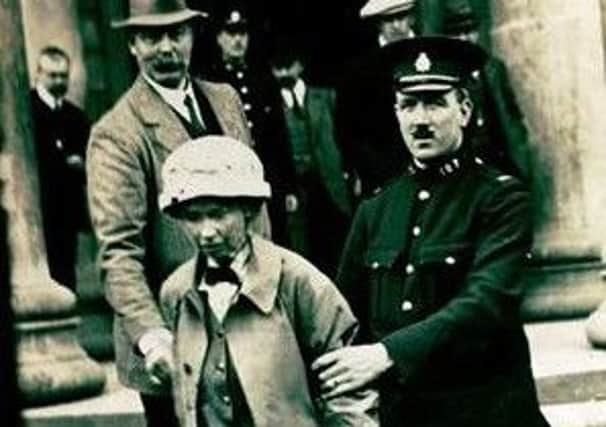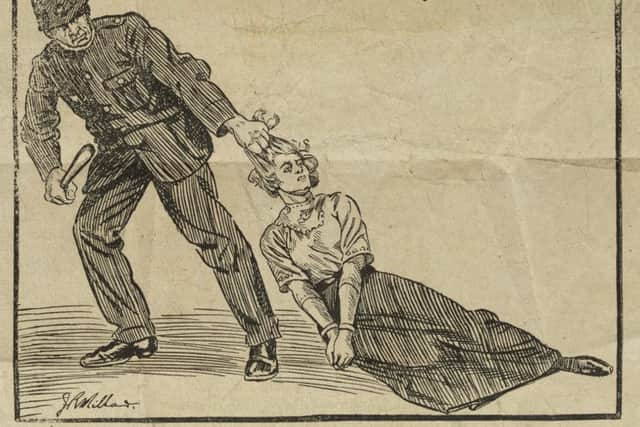Suffragette fight of Scottish women takes centre stage in Edinburgh exhibition


In the year that marks the centenary of some Scottish women getting the vote, court, prison and government records will be displayed alongside newspaper cuttings, notes from officials and personal letters from women held in custody who were subjected to force feeding.
Jocelyn Grant, archivist at the National Records of Scotland, the main curator of the exhibition that will run in General Register House during August, said: “The process of women getting the vote was much more of an evolution that a revolution.”
Advertisement
Hide AdAdvertisement
Hide AdThe exhibition and accompanying free talks looks at the differences between the two strands of the movement in Scotland: the suffragists, who adopted a peaceful, more political approach, and the suffragettes who preferred a more militant campaign that included fire-raising and bombing. Jocelyn said: “The records show that the movement started much earlier than is usually expected. The suffragists had been lobbying MPs and organising protests and petitions for years before the suffragettes started in 1905.


“The suffragists did make gains but it was slow going.”
The diary of prominent suffragist Lady Frances Balfour is one of the artefects included in the exhibition. In it, she makes mention of the death of Emily Wilding Davison who was trampled to death under the hooves of the King’s horse at Epsom Derby in 1913. Some of the records are “quite upsetting” according to Jocelyn. In particular, the comments on some of the incarcerated women’s behaviour. Frances Gordon – one of the few Scottish suffragettes who suffered force feeding – was described in a prison doctor’s note as “hysterical, neurotic and excitable”. Jocelyn said: “The doctors never seem to consider the impact of force-feeding on the womens’ mental health. She’s scared!”.
People’s response to the treatment of the suffragettes in prison is documented in the exhibition with notable women of the time writing to the authorities to express their disappointment that Scotland had adopted the barbaric practice. Jocelyn said: “You get more of a connection to what the women must have been through. You get an idea of how painful it was.
“All of the exhibition is very striking.”